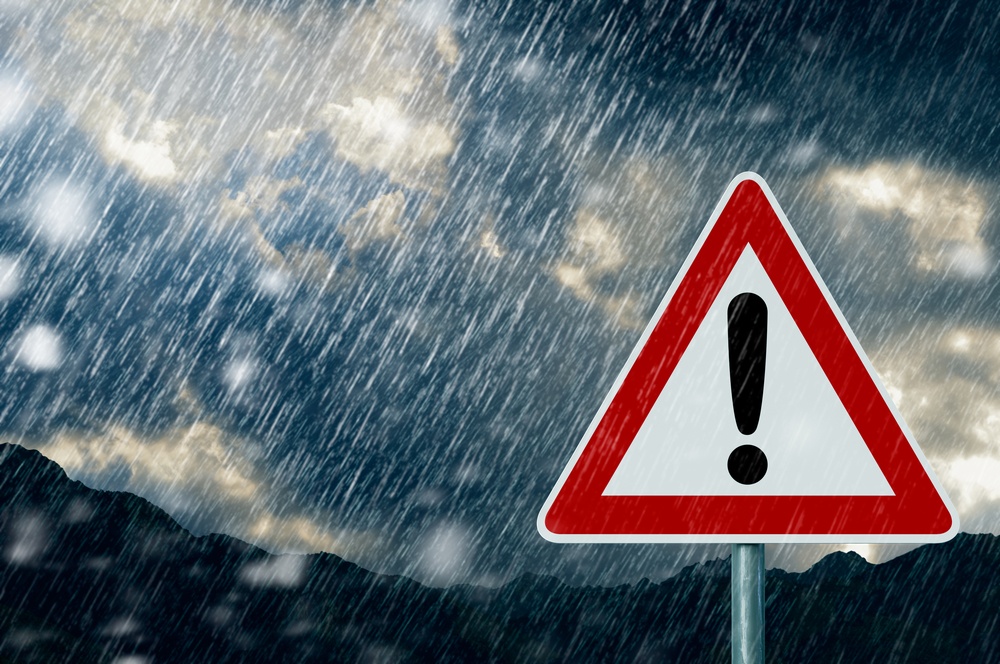
Unless it’s in the garage, your car is exposed to every type of weather. While it can stand up to daily sunshine, morning dew, and gentle rain, the weather isn’t always serene. Severe weather happens year around. Texas, in particular, has some heavy-duty storms that include everything from lightning and hail to hurricanes and tornadoes. Flooding is frequent where the water table is shallow or where much of the ground is covered in concrete.
What should you do if you are caught in severe weather and how do you handle the damage your car sustains?
First: Stay Safe
Avoidance is your best bet at staying safe and keeping your car from damage.
Hurricane Preparation
Most hurricanes come with several days warning. Consider now where you could park your car to keep falling or flying objects from hitting it if you don't have a garage. Stay away from low-lying ground to keep your vehicle from being inundated with flood water.
If you may need to evacuate, make sure the gas tank is full, emergency supplies are on board, and you have your evacuation route identified for hurricane season.
Hail Avoidance
Hail of any size can do extensive damage. Here’s what you can do to limit it.
- Pay attention to the weather reports and learn the type of weather patterns that produce hail.
- Stay inside once the hail is falling - in your car, home, or another shelter.
- If you are on the road, try to get to a covered area. Otherwise, pull over to the side of the road to wait out the storm.
- If a car window breaks, cover the window in plastic or other material to protect the inside from water damage.
Heavy Rain and Flooding
Flash floods are common in heavy rain. Water can rise faster than you would expect; a clear street can become a river in a matter of seconds. The threat can last up to 12 hours after the rain ends.
- Turn around, don’t drown. If you see a large puddle or standing water, go around it or select a different route.
- Keep your headlights on to make you visible to others in a torrential downpour. Drive slowly and watch for traffic.
- Start braking early and leave plenty of room to stop gently, so you don't hydroplane.
- Understand the difference between a flood watch, a flash flood watch, flood warning, and flash flood warning. A flash flood warning is an immediate threat; seek high ground immediately.
After the worst has passed, continue precautions to keep you and your family safe from harm.
- Avoid broken glass and exposed nails. Large hailstones can put a hole in your windshield, or high winds may topple a tree whose branch shatters the windows. Auto glass is designed to break into small pieces without sharp edges, but you can still sustain cuts if you aren't careful about cleaning it up. Use a vacuum and wear heavy gloves.
- Look for downed power lines. Always assume they are energized, meaning electricity is running through them. If you handle them, you could be electrocuted. Remain at least 10 feet away and alert the utility company and emergency responders.
- Don’t use a candle or open flame to check things out; always use a flashlight. Flame can ignite gas leaks or set material on fire. Keep several flashlights and replacement batteries in different areas of your home and your car.
Do not go out into the storm unless you have no other choice. Allow your car to shelter you as much as possible. You are safer from lightning strikes inside your car than out.
Assess the Damage
Once the weather clears, you can assess the damage to your car.
- If the car is under water or stalled in deep water, don’t try to start it. Serious engine damage could result.
- Water in the electrical system could cause a fire.
- Take photos of the car and its surroundings so you can show visual evidence of the damage for insurance purposes.
If a window is cracked or broken, cover it with plastic and seal the edges to prevent water and other debris from entering your car. Tarp and packing tape work well.
Understand How Your Insurance Policy Works
Most people have a general understanding of how auto insurance works but you need to know the specifics of your coverage.
- Comprehensive coverage usually covers storm damage, although you will pay a deductible. However, if you only carry liability, then auto damage from any cause is not covered. Call your insurance company if you are uncertain how your coverage works and to file a claim.
- Filing a claim for storm damage won't necessarily raise your rates, but a history of storms impacts policy rates in a geographic area.
- Report storm-related damage the same way you report an accident.
- File a claim whether you think the damage is covered or not. A trained representative will inspect the damage and provide a repair estimate. Then you can pursue a claim if you want, or pay out of your pocket.
Have the damage assessed, even if you think the car is not salvageable. A local mechanic may be able to give your car a quick check and advise whether or not you need to consider the car a complete loss.
Alternatively, you can have an inoperable car towed to a trusted repair shop and inspected from hood to trunk, looking for water intrusion and other damage. The shop should also determine if the electronics and airbags are still functional.
How to Avoid the Big Stink
When a car is flooded, mold growth and musty odors follow if the carpet and fabrics are soaked. Removing odors without replacing everything can be difficult if not impossible. Trapped moisture can also cause parts to rust, making the frame and substructure unsafe.
Dry the car quickly and thoroughly, and expect to replace carpets and other material. If the car was completely under water, it might not be fixable. Compare the cost of fixing it with the cost of a new or used car before deciding to move forward with repairs. The insurance coverage can help you make the decision.
Automobiles are the second largest purchase most people make. Protecting your investment just makes financial sense. Try to avoid exposing your car (and yourself) to severe weather with careful storage and attention to the forecast. If you get caught in weather, assess the damage afterward and compare the price of fixing the car and replacing it.





